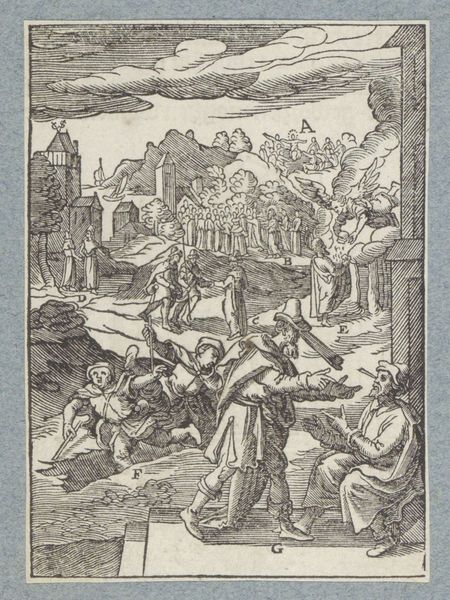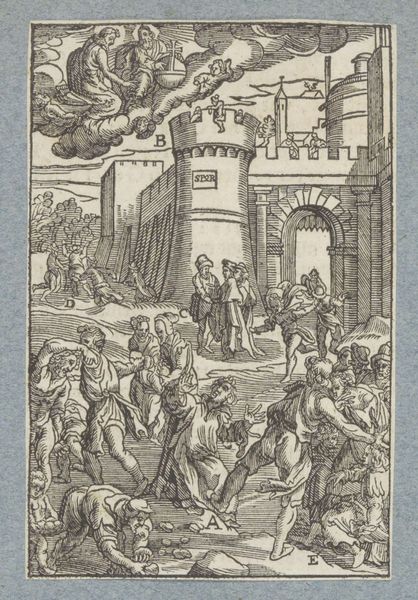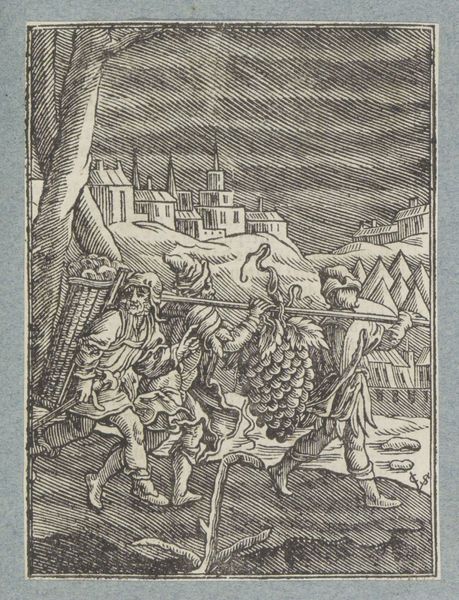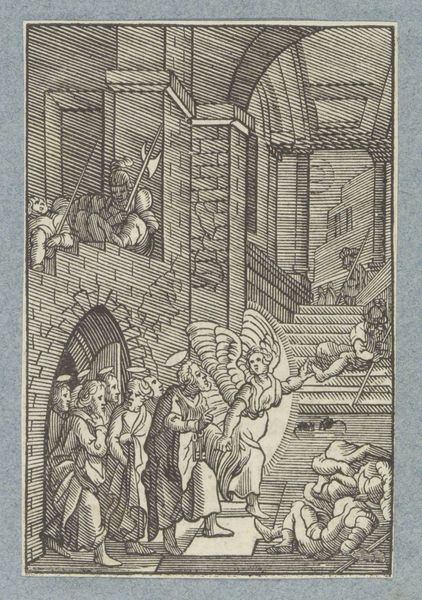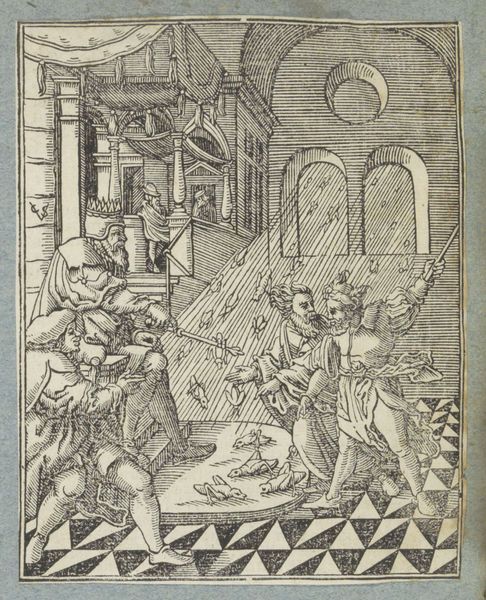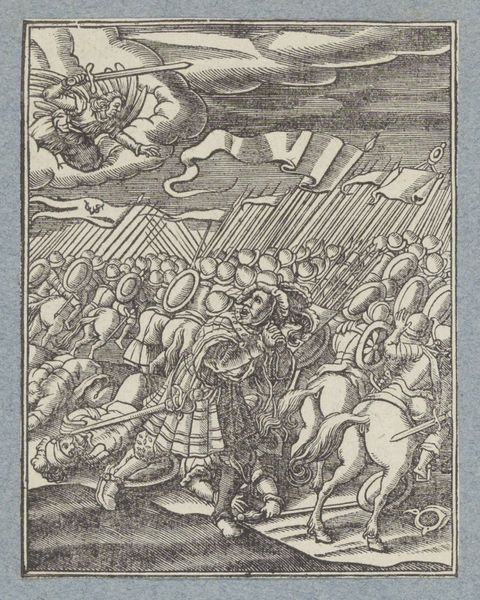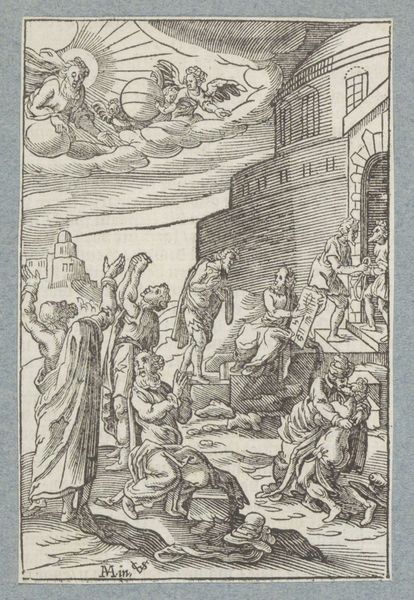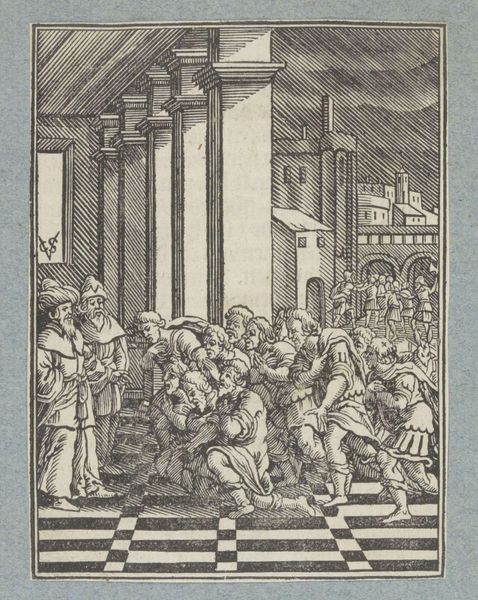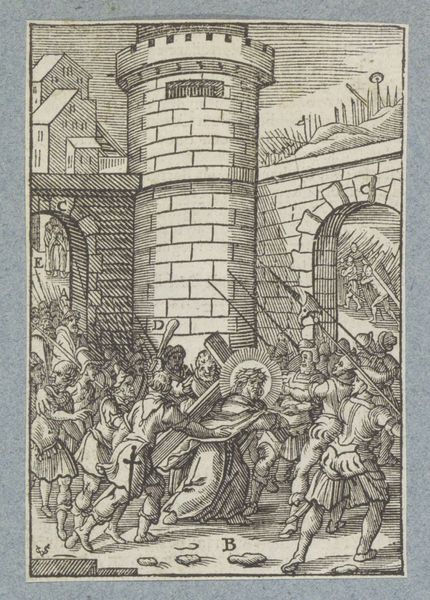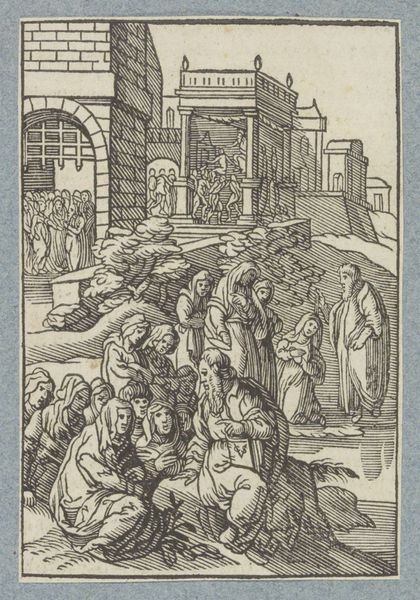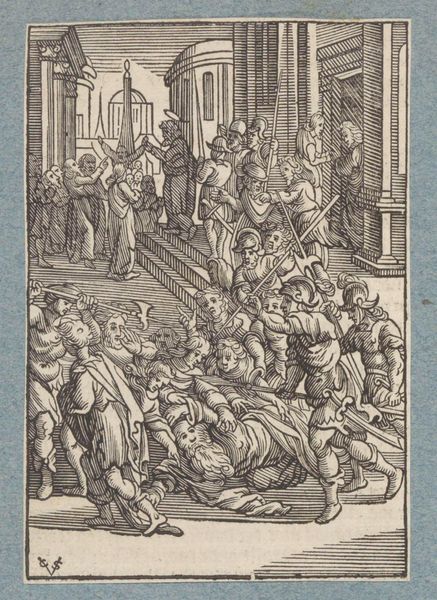
print, engraving
#
medieval
#
narrative-art
# print
#
pen sketch
#
history-painting
#
engraving
Dimensions: height 107 mm, width 83 mm
Copyright: Rijks Museum: Open Domain
Curator: Here we have “Leger trekt een stad binnen,” or "Army Entering a City," an engraving crafted between 1645 and 1646, attributed to Christoffel van Sichem the Younger, currently housed here at the Rijksmuseum. Editor: It's wild, right? This tiny print vibrates with such fierce energy! It’s a little battlefield ballet in miniature, all dense crosshatching and miniature chaos. Curator: Indeed. The engraving depicts a military scene, likely intended as a narrative of conflict. Given the time period, it reflects the historical context of warfare and civic unrest, visualized through period-specific weaponry, armor, and siege. Note, too, the architecture looming in the background; Sichem uses this built environment as an actor in the scene, marking the location as one of power, struggle and potential siege. Editor: It almost feels claustrophobic, doesn’t it? All that energy crammed into such a small space. It is interesting how much Sichem manages to convey through such tiny marks—all of these stories just swirling on the page! And I’m really feeling those moody, brooding skies; that looming tower practically whispers of doom. Curator: The use of line and shadow plays an essential role in the symbolic construction of power, illustrating themes of dominance and resistance through the depiction of bodies in dynamic opposition. Also, it serves as a stark representation of hierarchy during periods of conflict and revolution, where power becomes more sharply felt. Editor: Thinking about it that way…it’s like seeing little echoes of larger systemic oppressions made visual in the microcosm of a tiny print. All this makes me think of contemporary debates around the military industrial complex. This print feels almost timeless. Curator: Absolutely, it speaks to those intersections of power, representation, and historical narrative that endure, if often altered, throughout different historical contexts. Editor: Seeing art through that lens – the echoes, the historical undercurrents – that is how it comes alive. It shifts the way we read our present, really. Curator: It encourages that essential reflexivity, yes. Editor: Okay, well, I will be leaving here to go think about my role within that and within larger systems!
Comments
No comments
Be the first to comment and join the conversation on the ultimate creative platform.
